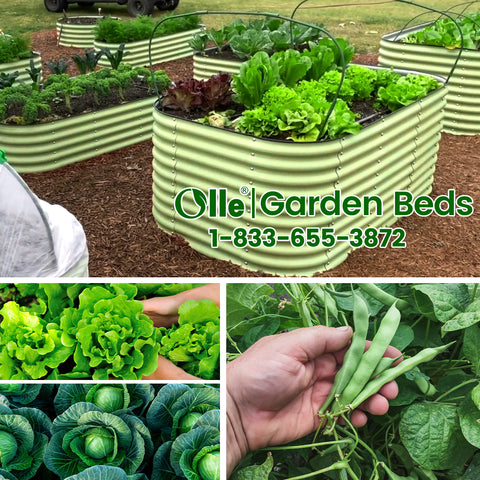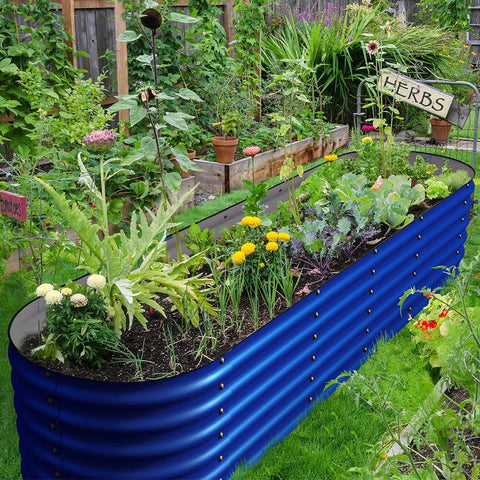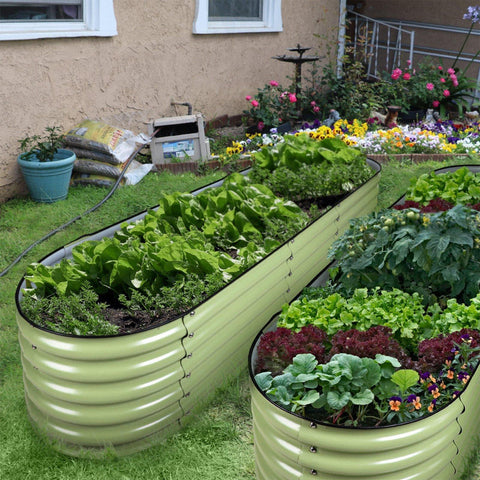The Ultimate Guide to Choosing the Right Raised Bed Garden Products
Are you looking to elevate your gardening game? Raised bed gardens are an excellent choice for both beginners and experienced gardeners. Raised beds offer numerous benefits, including better soil control, improved drainage, and easier weed management. However, to create a successful raised bed garden, you'll need the right products and materials. We'll walk you through the essential considerations for choosing the right raised bed garden products.
How to Choose the Ideal Site for Your Raised Bed Garden
Before you start shopping for raised bed garden products, you need to determine where your garden will be located. Factors to consider include sunlight exposure, drainage, and proximity to your water source.
Selecting the Right Material
One of the first decisions you'll need to make when creating a raised bed is the material for the bed itself. There are several materials to choose from when it comes to building your raised bed, including wood, metal, and composite materials. Each has its advantages and drawbacks.

Wood: Cedar and redwood are popular choices due to their natural resistance to decay and insects. Another choice is pressure-treated lumber, although it might include chemicals that can seep into the ground. If you opt for treated wood, consider using a barrier to prevent soil contact with the wood.
Composite: Composite materials like recycled plastic or wood-plastic composites are durable and low-maintenance. They won't rot or warp but can be more expensive upfront.
Metal: Galvanized steel or aluminum beds are long-lasting and provide a sleek, modern look. However, they can heat up quickly in direct sunlight, potentially affecting plant roots.
Concrete or Stone: These materials create permanent, long-lasting beds. They are excellent choices for a more formal garden design but can be costly and labor-intensive to install.
Choosing the Right Size and Shape
The size and shape of your raised bed will depend on factors like available space, your gardening goals, and your physical limitations. Here are some considerations:
Size: A common mistake is making raised beds too wide, making it challenging to access the center without stepping on the soil. Opt for a width that allows you to reach the center comfortably, usually no wider than 4 feet. Length can vary depending on your space.

Height: The height of your raised bed should accommodate the root depth of your chosen plants. Most raised beds are between 6 and 12 inches tall, but deeper beds may be necessary for crops with extensive root systems like carrots or potatoes.
Shape: Raised beds can be rectangular, square, or even curved. The shape should complement your garden's layout and aesthetics.
Selecting Quality Soil and Amendments
The quality of your garden soil is critical to the success of your raised bed garden. Start with a good-quality garden soil mix that is well-draining and nutrient-rich. Consider adding compost or other organic matter to improve fertility and soil structure.
Irrigation and Drainage
Proper irrigation and drainage are crucial for raised bed gardens. You can choose from various irrigation options, including soaker hoses, drip systems, or even hand watering. Ensure that your chosen method is compatible with your bed material and garden layout.
To prevent waterlogging, raise your raised bed slightly and use well-draining soil. If your area experiences heavy rainfall, consider installing a drainage system, especially if you have deep beds.

Mulch and Garden Accessories
To maintain and care for your raised bed garden, you'll need a set of essential tools and accessories. Mulching your raised bed can help conserve moisture, regulate soil temperature, and reduce weed growth. Organic mulches like straw, wood chips, or compost can be excellent choices.
Additionally, consider adding garden accessories like trellises, stakes, or cages to support climbing plants, protect your crops from pests, and maximize your garden's productivity.
Personalized Garden Tools
Lastly, invest in the right garden tools, tailored to your raised bed's size and your gardening style. Hand trowels, pruners, and weeding tools are essential for maintaining your raised bed garden efficiently.
Creating a thriving raised bed garden begins with selecting the right products and materials. From choosing the best material for your bed to selecting the right soil, irrigation, and garden tools, every decision you make will impact your garden's success. With the information provided in this ultimate guide, you can embark on your raised bed gardening journey confidently and create a lush and productive garden space to enjoy for years to come.
